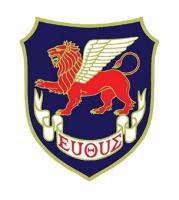| Language Policy |
The school adopts English as the main medium of instruction in all classes. |
| Learning and Teaching Strategies |
Our goal is to create a learning environment conducive to the development of social awareness, a sense of responsibility and community spirit. Teaching is learner-centred, aiming to raise students' critical thinking skills, creativity and the ability to learn to learn. A broad and balanced curriculum covering the eight key learning areas is provided for the students in Forms 1 to 3. Students in Forms 4 to 6 follow the senior secondary curriculum, taking the 4 core subjects and 3 electives. There is a variety of subjects to suit their interests, abilities and future studies. Learning diversity is well taken care of by the curriculum at various levels. Students also learn to learn through group projects, presentations and educational visits. Opportunities abound for students to apply knowledge acquired, to prove themselves and to excel. A whole-school approach is adopted in promoting reading. The Early Bird Reading Scheme, mainly for junior form students, is run every morning. There is also a reading session in the school. These provide opportunities to help students develop a habit and an interest in reading. |
| School-based curriculum |
1. Electives: 3X. Students based on their interest and ability to choose three elective subjects.<br> 2. Curriculum highlights: The curriculum at the junior levels is restructured to cater for learning diversity and students' careers needs. Some classes are split and additional teachers hired to facilitate teaching and learning. Small group and individual mentoring facilitates close monitoring, and enhancement or remedial work is administered accordingly. |
| Approach to Catering for Learner Diversity |
The curriculum at the junior levels is restructured to cater for learning diversity and students' careers needs. Some classes are split and additional teachers hired to facilitate teaching and learning. |
| Approach to Integrated Education |
The school's Special Educational Needs Coordinator (SENCO) will lead the Student Support Team and formulate policies with professionals (such as educational psychologists (EPs), speech therapists and social workers, etc.) and teachers in an effort to identify and cater for students with special educational needs. Appropriate support measures including special exam arrangements will be made to facilitate students' effective learning and foster their physical and psychological growth. |
| Education Support for Non-Chinese Speaking (NCS) Students |
|
| Home-School Co-operation |
The Parent Teacher Association organizes various activities, e.g. BBQ, picnic, used book sales and seminars. The school works closely with parents to nurture the growth of students through different channels such as Parents' Nights and Parents' Day. |
| School Ethos |
The school works to cater for the uniqueness of the school and individual students, further enhancing development beyond the scope of academic achievements. Two full-time social workers from the YMCA and a part-time educational psychologist provide services for both parents and students. Extra-curricular activities, careers guidance, religious education and, in fact, all sectors of the school collaborate to nurture students to become well-behaved and polite individuals, taking them to the farthest they can go in all aspects. |
| School Development Plan |
1. To offer chances for developing students’ good character based on Christian principles;<br>2. To foster a spirit of cooperation among teachers, students, parents and the larger community;<br>3. To develop students’ capacity for life-long learning. |
| Teacher Professional Training and Development |
Teachers keep closely abreast of and many are well ahead of the Continuous Professional Development recommendation. Peer learning within the staff is dynamic and robust. Activities range from lesson observation and collaboration to team teaching and planning across the curriculum. Inter-school efforts are vigorous and professional sharing of good practices with other schools is common. |
| Life-wide Learning |
To provide life-wide learning opportunities for our students, the school organizes a wide range of extra-curricular activities both on and off the school campus. Our students foster healthy hobbies and interests, and develop a strong sense of belonging through participating in these activities. The House Organization, among the oldest in the territory, was established with a view not only to developing the leadership skills of students but also to enabling senior students to take care of junior ones in the five Houses. The clubs and societies help students explore knowledge beyond the curriculum and build a strong foundation for life-long learning. They participate in many inter-school competitions such as music, speech, science, mathematics and sports competitions, and have won numerous prizes. The uniformed groups and Social Service Club give many services to our school and to the community. The school arranges various activities to widen the horizons of our students. These include cultural exchange programmes and language immersion courses in mainland China and overseas. |
